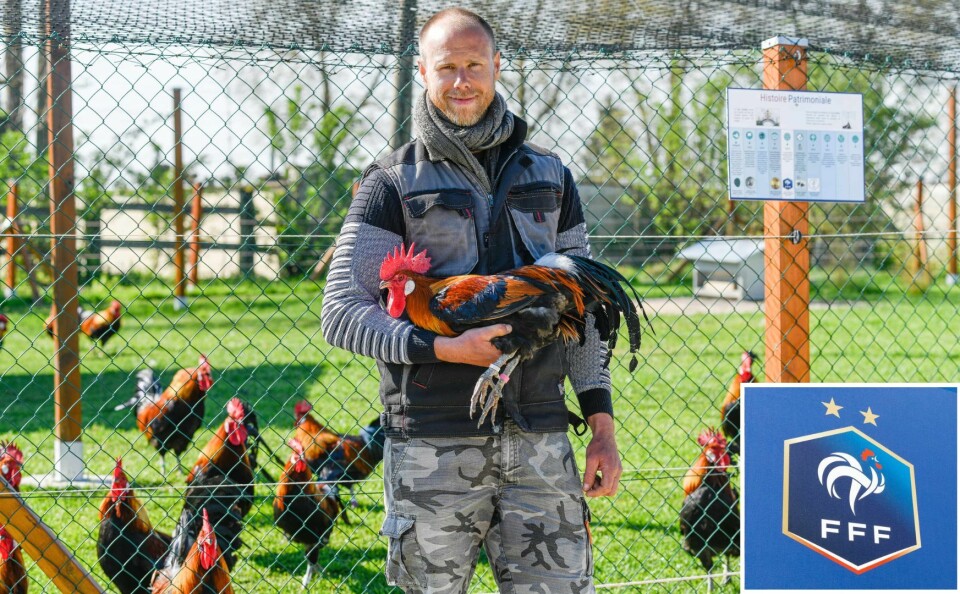-
The origins and meaning of tirer les marrons du feu
As Christmas approaches, we look at a phrase to describe someone who takes advantage of a situation
-
Confrontations with wild boar increase in France despite more hunts
Boar numbers are rising and the ‘unpredictable’ animals can cause serious injury
-
Mairie issues alert over snake on loose in Vendée
The five-metre long snake was reported to have been run over by a car last week but is yet to be found
Why France's national symbol - the Gallic cockerel - is under threat
How the ‘coq gaulois’ became the nation’s emblem and what is being done to save it

The ‘Gallic cockerel’ is well-known as one of France’s national symbols but it turns out that the original species it was based on has been at risk of disappearing from the French countryside.
The ancient gauloise breed used to be common in France but has been at risk since the Second World War.
A body called the Conservatoire du Coq Gaulois has been working to preserve it.
Read more: How to keep hens as part of a self-sufficient life in France
How the coq gaulois became the symbol of France
The coq gaulois motif can be found on top of Notre-Dame, on old French coins and, most famously, as the emblem of 22 French sport federations.
It derives from the fact that the Latin names for rooster and a Gaul (inhabitant of ancient Gaul) are the same – Gallus – so the Romans associated the two.
Conservatoire co-founder Damien Vidart, 37, said this comparison stayed in French minds and the rooster was adopted as a symbol by French kings, the French state, and during the French Revolution.
However he added: “Lots of people did not realise it corresponded to a real species, so 90% of our work to save them is about raising awareness.”
Read more: Cockerel in French village must leave as it crows too loudly
‘Hardy, grumblers and elegant like the French people’
Post-war, farmers had preferred hens that laid more eggs. The gauloise also takes longer to mature and needs a lot of space. Numbers are now, however, steadily rising, he said.
Mr Vidart said they found that there were 371 roosters and 700 hens in a 2022 census.
Coqs gaulois are adept at flying and adaptable to different climates.
They can be identified by their red-orangey eyes, white areas under the ears, and grey feet.
“The coq gaulois is a part of us. It is an integral part of our country,” he said.
He thinks that there are similarities between the coq and the French people: they are hardy, râleurs (grumblers) and elegant.
Plan to save France’s oldest symbol
When he acquired his first rooster of the species in 2010, he found out that there were only 18 registered owners across France and different strains depending on region.
Worried about the survival of France’s oldest symbol, he developed a plan to save them.
The first step was to find the owners, try to convince them to become breeders and create a network so that they can easily communicate and help each other.
He also needed a place to bring together the different strains, so the conservatoire was started in 2021 at the Méry-sur-Seine educational farm where he works.
There, selective breeding according to the high standards can take place and the public can come and spend time with the birds.
INRAE, the national institute of agricultural, food and environment, took blood samples from the 22 strains in June 2023, to decrypt their DNA and avoid inbreeding which can cause problems in the future. There are also conservation efforts for each strain in their region.
Mr Vidart said the roosters are easy to take care of and are full of personality.
“They are sociable and curious. I spend all my time with them and I find it easy to have a relationship with them like you might have with a dog.”
The conservatoire is open for daily visits.
Related articles
French mayor limits number of animals per household to restrict noise
French egg shortages put spotlight on keeping hens at home
France celebrates as The Sun’s England football campaign backfires
























